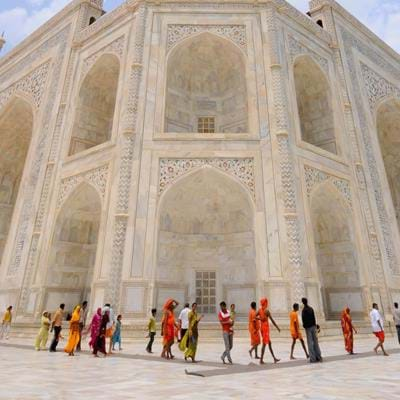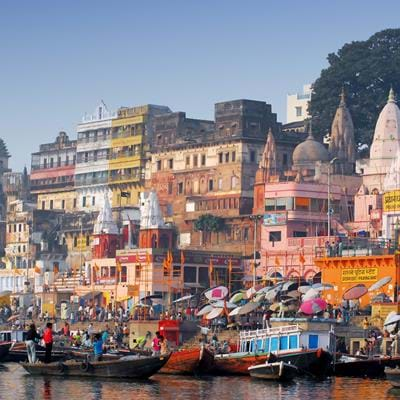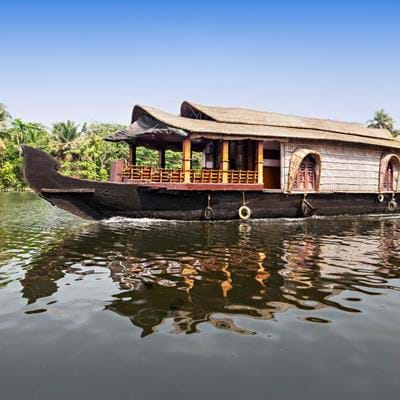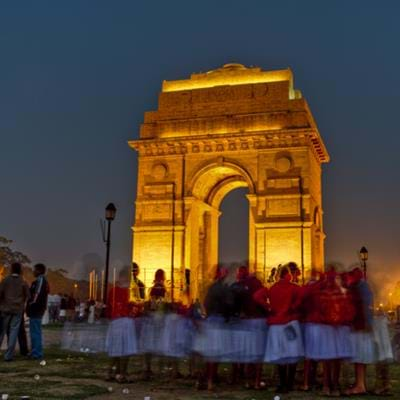India 11.08.2014 Anthony Ryan
One of India's most popular tourist destinations, Agra forms a portion of the country's famous Golden Triangle - the name given to Agra, Delhi and Jaipur collectively. Whether you intend to visit Agra as part of a tour of the Golden Triangle or another itinerary, this jewel is virtually guaranteed to be the highlight of your trip.
It is, of course, best-known for being the home of the exquisite Taj Mahal, which is widely considered to be one of the most beautiful buildings on earth. However, it possesses a host of other treasures too, including one of the nation's most impressive Mughal forts, and an ancient city long since abandoned.
Today, we will introduce you to the main sites of Agra - from the most famous attraction to lesser-known gems.

The Taj Mahal
Few buildings are as iconic as the Taj Mahal. Not only is it often described as the most beautiful building in the world, but it is also heralded as a monument to everlasting love - as well it might, given it was built as a memorial for Mumtaz Mahal, the wife of emperor Shah Jahan.
Mumtaz passed away in 1631 during childbirth, and the loss is said to have shattered the emperor. Work on the Taj Mahal began the year after her death, with the main building then finished within eight years - though it is thought the completion of the whole complex took much longer. When Shah Jahan passed away in the 1660s, he was buried here alongside Mumtaz.
For the traveller, the Taj Mahal offers endless opportunities for wonder and admiration. It is perhaps the incredible symmetry of the building that renders it most striking - though the stunning translucent marble it is made of, as well as the intricate decorative work, make just as much of an impact.
Be sure to take the time to walk around the grounds - the ornamental gardens are, arguably, as stunning as the building itself, while the grounds of course offer wonderful views of the Taj standing serenely on its marble platform, with nothing but the sky behind it.

Agra Fort
You can see many Mughal forts during your travels around India; Agra Fort will, without doubt, be one that particularly sticks in your mind. Originally designed to be predominantly a military fortification, it was later transformed into a palace by Shah Jahan.
Construction of this red sandstone colossus began in the mid-16th century under the instruction of Emperor Akbar. With its 20 m high walls, the fort is a truly imposing sight, and is no less remarkable once you make your way inside. Indeed, this vast complex is home a wide array of halls, courtyards, mosques and private apartments, so the sheer amount there is to see is staggering.
Among the highlights is the Diwan-i-Am, an open-air hall where domestic government business was conducted by emperor Shah Jahan, and Musamman Burj and Khas Mahal - a striking tower and palace, where Shah Jahan lived for eight years before he died. Indeed, Shah Jahan actually ended up imprisoned here until his death in 1666 - he was incarcerated here by his own son after said offspring snatched the throne.

Fatehpur Sikri
If you have time to explore Agra in a little more depth, it is well worth making the 40 km trip west of the city to discover another metropolis - this one an abandoned capital. For just 15 years in the 16th century, Fatehpur Sikri was the capital of the Mughal empire - a poor water supply caused it to be abandoned so soon after it was created.
Emperor Akbar decided to build the capital here after a saint in the then village of Sikri correctly predicted the birth of an heir to throne. Fashioning the capital in appropriate Mughal style, the emperor fitted it out with a spectacular mosque and a wonderful complex of palaces, which can still be seen today.
Indeed, among the elements still intact in the palace complex are Diwan-i-Am, which now looks like just a garden, but was once where the emperor held court hearings, as well as Diwan-i-Khas (the treasury) and the Palace of Jodh Bai, one of the Akbar's wives.










